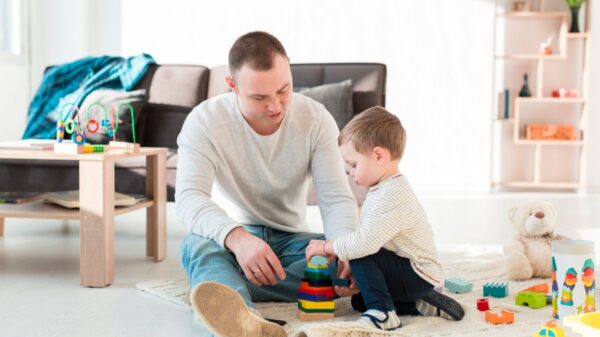As parents, understanding and managing your baby’s sleep patterns can feel like solving a puzzle. One unique phenomenon that often leaves parents bewildered is reverse cycling. This blog will help you understand reverse cycling, why it happens, and how to manage it effectively. Let’s dive in!
What is Reverse Cycling?
Reverse cycling is a sleep pattern where a baby sleeps more during the day and is wakeful at night. It often occurs in younger babies struggling to establish a consistent sleep schedule or when external factors disrupt their routines. While challenging for parents, reverse cycling is a natural response that helps babies meet their feeding needs and seek comfort.
Why Does Reverse Cycling Happen?
Several factors contribute to reverse cycling. Here are some common reasons:
1. Breastfeeding Dynamics
Reverse cycling is more common in breastfed babies. They may feed more frequently at night for nourishment and comfort. Nighttime nursing also strengthens the bond between the baby and the breastfeeding parent.
2. Daytime Distractions
As babies grow, their curiosity about the world increases. Daytime distractions like toys, sounds, or family interactions can shorten naps and disrupt consolidated sleep, leading to reverse cycling.
3. Overstimulation
An overstimulated baby may struggle to settle down for more extended periods. Bright lights, loud noises, or an active environment can interfere with a baby’s ability to transition smoothly into sleep, causing wakefulness at night.
Signs and Symptoms of Reverse Cycling
Understanding the signs can help you identify reverse cycling in your baby. Look for these indicators:
- Frequent Night Wakings: Waking multiple times during the night for feeding or comfort.
- Short Daytime Naps: Take short and less restorative naps during the day.
- Fussy Behavior: Increased fussiness or irritability during nighttime.
- Increased Nighttime Feeding: Nursing or bottle-feeding more frequently at night than during the day.
How to Manage Reverse Cycling
While reverse cycling can be exhausting, there are effective strategies to manage it. These include creating a supportive sleep environment, adjusting feeding patterns, and using comforting techniques.
1. Creating a Supportive Sleep Environment
- Establish a Bedtime Routine: Create a soothing routine involving a warm bath, gentle massage, or reading a story.
- Dim the Lights: Lower the light intensity in the evening to signal it’s time to wind down.
- Use White Noise: Gentle, rhythmic sounds can mask background noise and promote relaxation.
2. Adjusting Feeding Patterns
- Encourage Frequent Daytime Feedings: Offer more feedings during the day to reduce hunger at night.
- Try Dream Feeding: Feed your baby before you sleep to help them sleep longer stretches at night.
3. Using Comforting Techniques
- Respond Promptly: Address nighttime wakings with gentle rocking, swaddling, or soothing sounds.
- Safe Co-Sleeping: Use a co-sleeper bassinet or sidecar arrangement for proximity and convenience during nighttime feedings.
4.Seek Support
- Lactation Consultant: A lactation consultant can provide tailored advice for breastfeeding parents.
- Parent Support Groups: Join parenting communities for tips, reassurance, and shared experiences.
Tips for Coping with Sleep Deprivation
Parenting during reverse cycling can be draining. Here’s how to stay resilient:
- Nap When Your Baby Naps: Snag up on rest during your baby’s daytime naps.
- Share Responsibilities: Alternate nighttime caregiving duties with your partner.
- Prioritize Self-Care: Engage in activities like mindfulness, reading, or a warm bath to recharge.
Promoting Healthy Sleep Habits
Establishing positive sleep routines can help your baby transition out of reverse cycling:
- Set a Consistent Schedule: Stick to regular nap times and bedtime routines.
- Create a Calm Sleep Environment: Use blackout curtains, maintain a moderate room temperature, and ensure comfortable bedding.
- Encourage Natural Light Exposure: Daily exposure to sunlight can help regulate your baby’s internal clock.
When to Seek Professional Help
If reverse cycling persists or significantly impacts your baby’s well-being, consider consulting a paediatrician or sleep specialist. Warning signs include:
- Prolonged reverse cycling affects growth or development.
- Suspected medical issues interfering with sleep.
- Signs of excessive fatigue or difficulty thriving.
Emotional Impact on Parents
Reverse cycling can be emotionally taxing. It’s vital to acknowledge your feelings and seek support. Share your ventures with friends, family, or online parenting groups. Remember, self-care is crucial for your well-being and your capacity to care for your baby.
Conclusion
Reverse cycling is a natural phase in a baby’s sleep journey. You can navigate this challenge patiently and confidently by recognizing the signs, implementing supportive strategies, and seeking help. Every baby is unique, so adjust these tips to work your family’s needs and celebrate the small victories.











